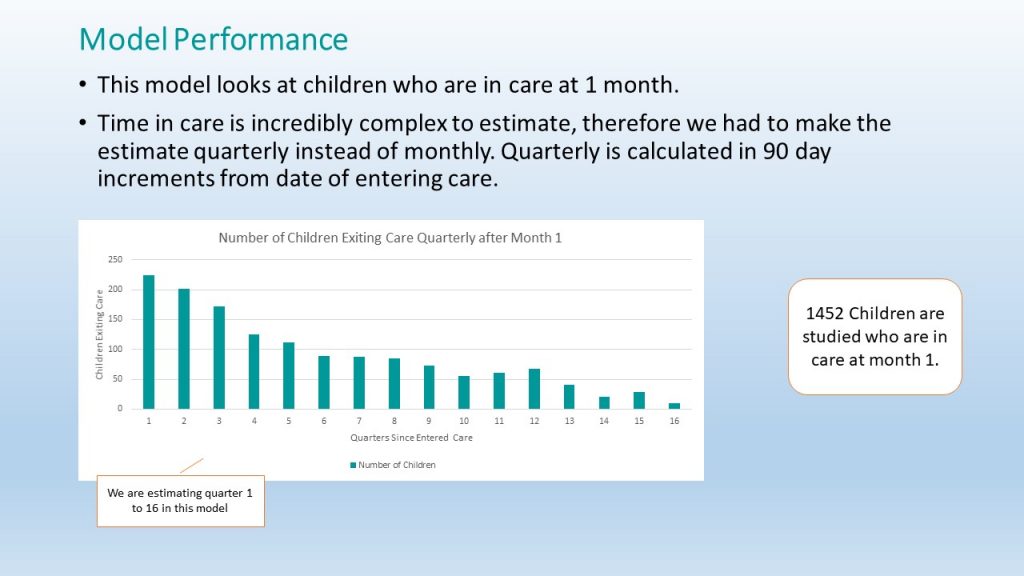Client:
A non-profit providing social services to multiple states, specifically focused on providing home care and housing solutions for at-risk children. The company has extensive expertise in child related social services functions, is staffed by extremely dedicated and passionate leadership, and deals with difficult, complex, and protracted family challenges while seeking to deliver the best possible outcomes for the children caught up in those scenarios.
Challenge:
The client needed a better tool to predict the length of stay for a child entering the process. This was critical for multiple reasons – first and foremost, experience shows that the longer the stay in the care process, the less likely the child was to be able to reach an eventual positive outcome, and second, the metric is a key input to multiple business-related forecasting and budgeting requirements across a host of functions for the client.
Approach:
AMI conducted an extensive review of twenty years of client data documenting historical performance – the records of length of stay, by child. AMI conducted initial statistical analysis to determine the key variables that correlated with length of stay, and extensively reviewed those finding with the subject matter experts at the client. Following this, AMI constructed a series of predictive models and compared the model performance to historical results – and identified the levels of confidence associated with predictive outcomes.

Results:
AMI installed the code and trained client personnel to run the model – thus allowing the agency the ability to “score” a child for predicted length of stay on arrival. This capability, combined with the existing extensive expertise of the case workers and care providers improved the client’s ability to a) identify high risk for extended length of stay children and b) have greater insight into planning and budgeting for the appropriate resources.
The implementation was so successful that AMI was called back to develop an even more sophisticated predictive tool – an algorithm that assessed how may times a child was likely to have to be moved between care locations/solutions once they entered the process. We’ll look more closely at that scenario in a future use case.



